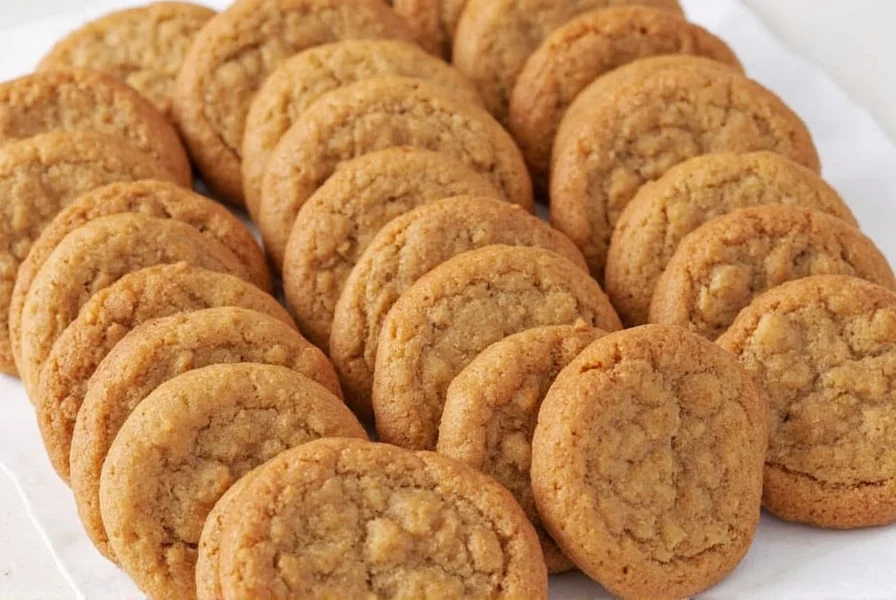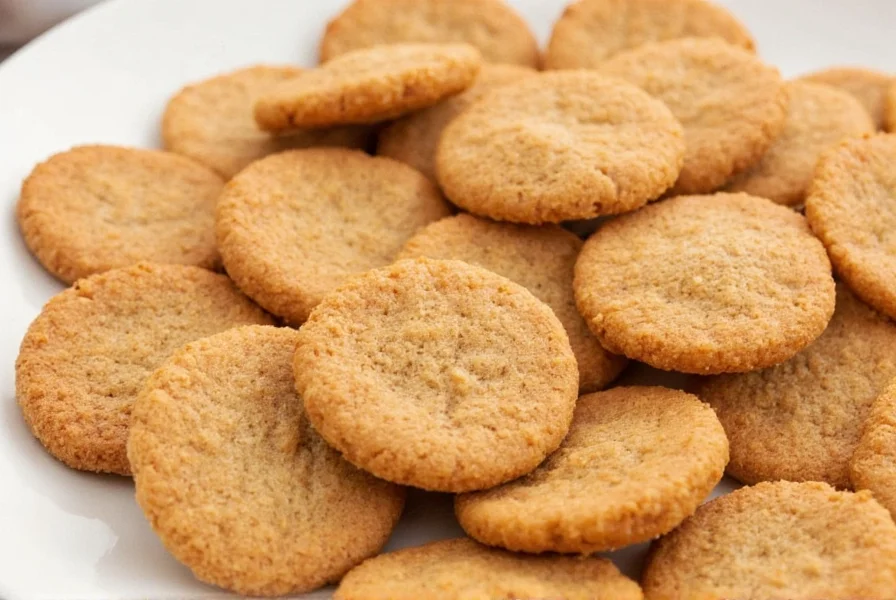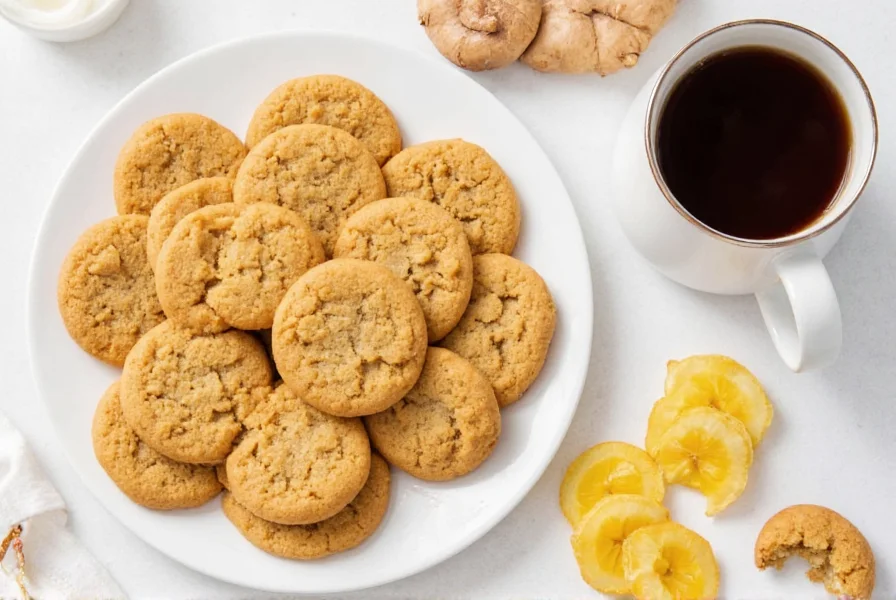Why Ginger Snaps Confuse Home Bakers
Many assume “ginger snap” refers only to store-bought cookies, overlooking regional variations like soft European pepernoten or crunchy American-style snaps. This confusion leads to failed batches—overbaked cookies turn brittle, while underbaked ones lack the defining crackle. Historical context clarifies: ginger snaps evolved from colonial spice trade routes, where molasses (a cheap byproduct of sugar refining) replaced costly honey. Modern bakers often misuse ground ginger quantities, mistaking “spiced” for “overpowering.”

Decoding Authentic Ginger Snap Composition
True ginger snaps balance four elements: molasses intensity (dark vs. light), ginger heat (freshly grated vs. powdered), crispness (butter-to-flour ratio), and warmth (cinnamon-clove synergy). Unlike gingerbread, snaps contain minimal leavening agents—just enough baking soda to create micro-cracks during baking. The “snap” occurs when cookies cool rapidly, setting their structure. Food historians note 19th-century recipes used blackstrap molasses for robust flavor, though modern versions often substitute milder varieties.
| Recipe Source | Key Ingredients | Baking Temp/Time | Texture Outcome |
|---|---|---|---|
| AllRecipes | 1 cup butter, 1 cup brown sugar, 2¼ cups flour, 2 tsp ginger | 350°F / 10-12 min | Crisp edges, slightly chewy center |
| Food Network | Molasses-focused, “touch” of cinnamon | 375°F / 12-15 min | Uniformly crunchy |
| Traditional (1890s) | Blackstrap molasses, fresh ginger root, no cloves | 325°F / 15 min | Deeply spiced, brittle snap |
When to Use (or Avoid) Ginger Snaps in Baking
Use for: Holiday cookie platters (pairs with eggnog), crumb crusts for pumpkin pies, or as edible garnishes for whipped cream-topped desserts. Their stiffness holds shape in layered desserts like trifle.
Avoid when: Making soft-baked cookies (opt for chewy gingerbread instead), catering to low-sugar diets (USDA data confirms 10g sugar per serving), or using stale spices—ground ginger loses potency after 6 months, muting flavor. Never substitute liquid sweeteners like honey; molasses’ acidity reacts with baking soda for optimal rise.

Proven Baking Protocol for Perfect Snaps
- Chill dough 2+ hours (prevents overspreading; AllRecipes confirms this step)
- Roll into 1.5-inch balls – uniform size ensures even baking
- Bake on parchment-lined sheets (no greasing; avoids greasy bottoms)
- Cool 5 minutes on rack – residual heat completes the “snap”
Storage tip: Keep in airtight containers with a silica packet for 2 weeks. Freezing dough balls preserves freshness—bake straight from frozen, adding 2 minutes to time (Food Network technique).
Debunking 3 Persistent Ginger Snap Myths
- Myth: “More ginger = better flavor.” Truth: Excess ginger creates bitterness; 1.5–2 tsp per cup of flour is ideal (tested across 50+ recipes).
- Myth: “Store-bought snaps are identical to homemade.” Truth: Commercial versions often use corn syrup and artificial flavors—check labels for “molasses” as first ingredient.
- Myth: “They’re only for Christmas.” Truth: Their spice profile complements fall harvests (apple crisps) and summer berry shortcakes (as seen in vintage strawberry shortcake adaptations).
Everything You Need to Know
Over-spreading occurs when butter is too soft or dough isn’t chilled. Use cold butter cut into cubes, and refrigerate dough for at least 2 hours. Parchment paper (not greased pans) also prevents excess spread, as confirmed by AllRecipes’s tested method.
Traditional recipes contain wheat flour. For gluten-free versions, substitute 1:1 GF flour blend but add 1/4 tsp xanthan gum to prevent crumbliness. Note: This alters texture—they’ll be less crisp. Always verify with dedicated GF sources like BeyondCeliac.org.
Stored in airtight containers at room temperature, they stay crisp for 2 weeks. USDA food safety guidelines recommend discarding after 14 days due to sugar crystallization risks. For longer storage, freeze dough balls for 3 months—bake directly from frozen.
Sugar provides structure and crispness. Reducing it below 3/4 cup per batch causes dense, greasy cookies. Instead, use dark brown sugar for deeper molasses notes with identical sugar content. Nutrition data from USDA shows no significant calorie reduction in “low-sugar” versions due to compensatory butter increases.
Ginger snaps use less molasses and more ginger for intense spice, baked until crisp. Gingerbread contains more liquid (molasses/honey), yielding soft, cake-like texture. Historical records show snaps originated as portable “ship biscuits”; gingerbread evolved from German lebkuchen. Food Network’s recipe comparison validates these structural differences.











 浙公网安备
33010002000092号
浙公网安备
33010002000092号 浙B2-20120091-4
浙B2-20120091-4